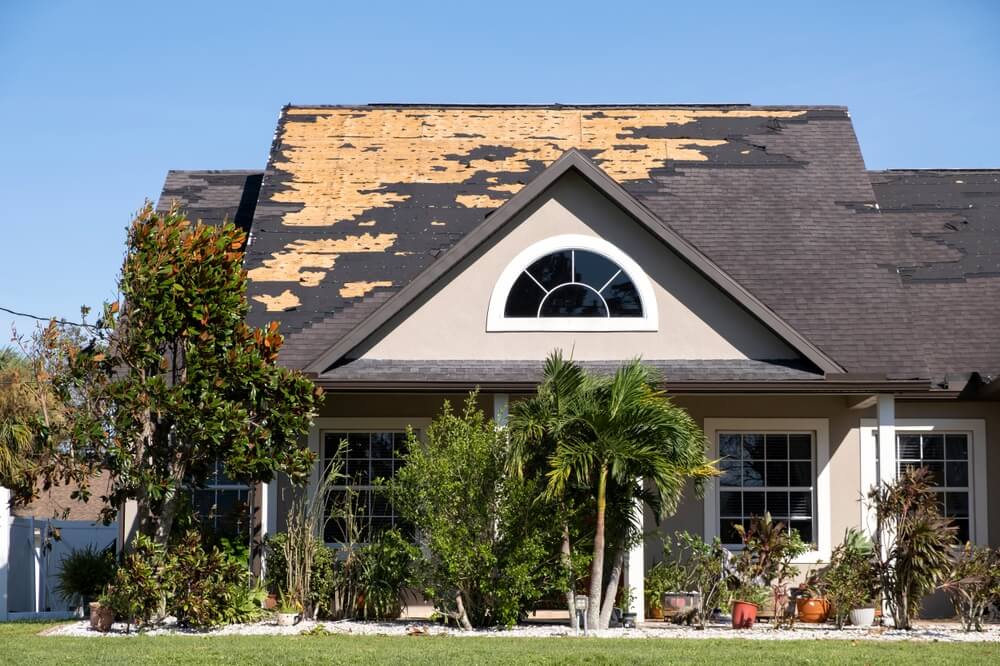Wellington sits in South Florida, a region prone to hurricanes, tropical storms, and high winds. Because of this, homes face unique risks that can drive up insurance premiums. A wind mitigation inspection evaluates how well your property can resist these forces, giving both you and your insurance company confidence in its resilience.
Inspectors typically review:
- Roof design and materials – Hip roofs are usually more wind-resistant than gable designs.
- Impact-resistant features – Windows, doors, and garage doors designed to withstand flying debris.
- Roof deck attachment – The type and spacing of nails or fasteners used.
- Roof-to-wall connections – Clips, straps, or engineered connections that keep the roof anchored.
- Secondary water resistance – Extra protection against water intrusion if roofing materials are compromised.
The result is not only greater peace of mind during storm season but also the potential for significant insurance discounts. Many insurers in Wellington offer lower premiums to homeowners who demonstrate these protective features.

What to Expect During a Wind Mitigation Inspection
When you schedule an inspection in Wellington, a licensed professional will visit your property to assess wind-resistant features. This includes:
- Reviewing roof coverings for compliance with Florida Building Codes.
- Checking roof deck attachments for nail type and spacing.
- Inspecting roof-to-wall connections (toe nails, clips, single wraps, or double wraps).
- Examining attic spaces for truss design and reinforcements.
- Verifying opening protection, such as impact glass or hurricane shutters.
The inspector documents all findings with photos and detailed notes. The report is then submitted to your insurance provider, potentially qualifying you for immediate policy discounts.
Preparing Your Home for an Inspection
To ensure an accurate assessment:
- Provide full access to your attic, garage, and all entry points.
- Keep permits and documentation handy (especially for roof replacements, upgrades, or window installations).
- Remove obstructions so the inspector can safely examine structural connections.
A well-prepared home makes it easier for the inspector to verify protective features, improving your chances of qualifying for maximum insurance credits.
Choosing a Qualified Wind Mitigation Inspector in Wellington
Not all inspections are equal. To get the most reliable results:
- Hire a licensed professional—preferably one certified by the Florida Building Commission or holding relevant state credentials.
- Check reviews and references from other Wellington homeowners.
- Look for local experience—inspectors familiar with South Florida’s codes and storm patterns provide more accurate assessments.
A skilled inspector not only documents features for insurance savings but may also recommend affordable upgrades to strengthen your home’s resilience.

Key Features Inspectors Look For
Here’s a breakdown of the primary components reviewed during a wind mitigation inspection in Wellington:
Roof Covering
- Type of material (shingles, metal, tile).
- Compliance with Florida Building Codes (2001 or later) for wind resistance.
Roof Deck Attachment
- 6d nails, 8d nails, or advanced fastening patterns—the stronger the connection, the higher the wind resistance.
Roof-to-Wall Connections
- Toe Nails – Weakest connection, common in older homes.
- Clips – Moderate strength.
- Single Wraps – Stronger protection.
- Double Wraps – Very strong connection.
- Structurally Connected – Highest level of wind resistance.
Roof Shape
- Hip Roofs – Most wind-resistant design.
- Gable, Flat, Gambrel – More vulnerable to wind uplift.
Secondary Water Resistance (SWR)
An extra barrier that prevents leaks if shingles or tiles are compromised.
Opening Protection
- Windows & Doors – Impact-resistant glass or shutters.
- Garage Doors – Reinforced to withstand high winds.
Benefits for Wellington Homeowners
- Lower Insurance Premiums – Many residents save hundreds of dollars annually.
- Peace of Mind – Assurance your home can withstand hurricane-force winds.
- Reduced Damage Risk – Identifies weak points before storms strike.
- Higher Property Value – A home with wind-resistant features is more attractive to buyers.
Addressing Cost Concerns
Some homeowners in Wellington worry about inspection costs, but these are usually modest and quickly offset by insurance savings. For most families, the inspection pays for itself within the first year.
Frequently Asked Questions
- What’s the difference between a wind mitigation inspection and a 4-point inspection?
Wind mitigation focuses on wind resistance features, while a 4-point inspection looks at major systems (roof, electrical, plumbing, HVAC) for insurance eligibility.
- How often should I get a wind mitigation inspection?
Inspections are typically valid for five years. You’ll need a new one if applying for new insurance coverage or after major home upgrades.
- Do all Wellington homeowners need one?
While not mandatory, nearly all homeowners in Wellington benefit from the insurance discounts and storm preparedness insights.
- What if my home doesn’t meet the criteria?
There’s no pass or fail—you just may not qualify for all discounts. Your inspector will recommend upgrades (like adding hurricane clips or reinforced windows) to improve your chances.
Conclusion
For Wellington homeowners, wind mitigation inspections aren’t just about meeting insurance requirements—they’re about protecting your family, your property, and your finances. By identifying and documenting wind-resistant features, you can unlock substantial insurance savings while fortifying your home against South Florida’s stormy climate.
Whether you’re purchasing a new home or updating your current property, scheduling a wind mitigation inspection is one of the smartest investments you can make.




